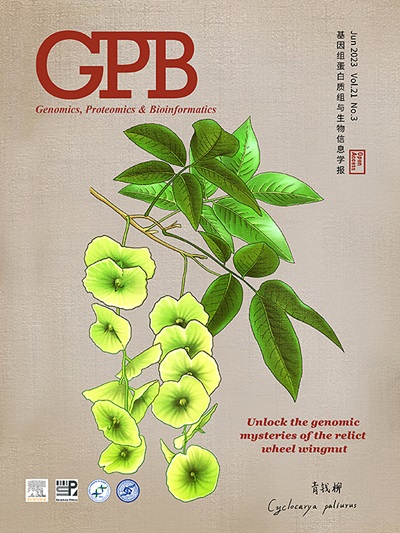nsun2介导的mRNA m5C修饰调控肝癌的进展
IF 7.9
2区 生物学
Q1 GENETICS & HEREDITY
引用次数: 0
摘要
RNA修饰影响许多生物过程和生理疾病。5-甲基胞嘧啶(m5C)修饰调节多种肿瘤的进展。然而,其在肝细胞癌(HCC)中的特征和功能在很大程度上仍然未知。在这里,我们发现HCC组织的m5C甲基化水平高于邻近正常组织。转录组分析显示,高甲基化基因的主要功能参与磷酸激酶信号通路,如Ras和PI3K-Akt通路。m5C甲基转移酶NSUN2在HCC组织中高表达。有趣的是,许多基因的表达与NSUN2的表达呈正相关,包括GRB2、RNF115、AATF、ADAM15、RTN3和HDGF。Real-time PCR检测进一步发现,HCC细胞中GRB2、RNF115、AATF mrna的表达随着NSUN2的下调而显著降低。此外,NSUN2可以通过调节Ras信号通路调节HCC细胞对索拉非尼的细胞敏感性。此外,敲除NSUN2导致细胞周期阻滞。综上所述,我们的研究证明了NSUN2在HCC进展中的重要作用。本文章由计算机程序翻译,如有差异,请以英文原文为准。
NSUN2-mediated mRNA m5C Modification Regulates the Progression of Hepatocellular Carcinoma
RNA modifications affect many biological processes and physiological diseases. The 5-methylcytosine (m5C) modification regulates the progression of multiple tumors. However, its characteristics and functions in hepatocellular carcinoma (HCC) remain largely unknown. Here, we found that HCC tissues had a higher m5C methylation level than the adjacent normal tissues. Transcriptome analysis revealed that the hypermethylated genes mainly participated in the phosphokinase signaling pathways, such as the Ras and PI3K-Akt pathways. The m5C methyltransferase NSUN2 was highly expressed in HCC tissues. Interestingly, the expression of many genes was positively correlated with the expression of NSUN2, including GRB2, RNF115, AATF, ADAM15, RTN3, and HDGF. Real-time PCR assays further revealed that the expression of the mRNAs of GRB2, RNF115, and AATF decreased significantly with the down-regulation of NSUN2 expression in HCC cells. Furthermore, NSUN2 could regulate the cellular sensitivity of HCC cells to sorafenib via modulating the Ras signaling pathway. Moreover, knocking down NSUN2 caused cell cycle arrest. Taken together, our study demonstrates the vital role of NSUN2 in the progression of HCC.
求助全文
通过发布文献求助,成功后即可免费获取论文全文。
去求助
来源期刊

Genomics, Proteomics & Bioinformatics
Biochemistry, Genetics and Molecular Biology-Biochemistry
CiteScore
14.30
自引率
4.20%
发文量
844
审稿时长
61 days
期刊介绍:
Genomics, Proteomics and Bioinformatics (GPB) is the official journal of the Beijing Institute of Genomics, Chinese Academy of Sciences / China National Center for Bioinformation and Genetics Society of China. It aims to disseminate new developments in the field of omics and bioinformatics, publish high-quality discoveries quickly, and promote open access and online publication. GPB welcomes submissions in all areas of life science, biology, and biomedicine, with a focus on large data acquisition, analysis, and curation. Manuscripts covering omics and related bioinformatics topics are particularly encouraged. GPB is indexed/abstracted by PubMed/MEDLINE, PubMed Central, Scopus, BIOSIS Previews, Chemical Abstracts, CSCD, among others.
 求助内容:
求助内容: 应助结果提醒方式:
应助结果提醒方式:


